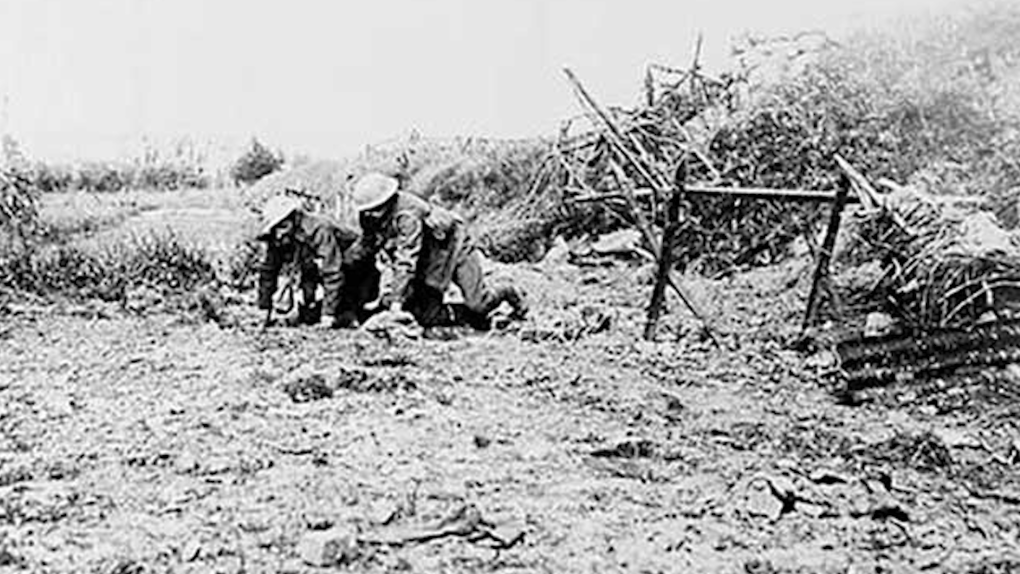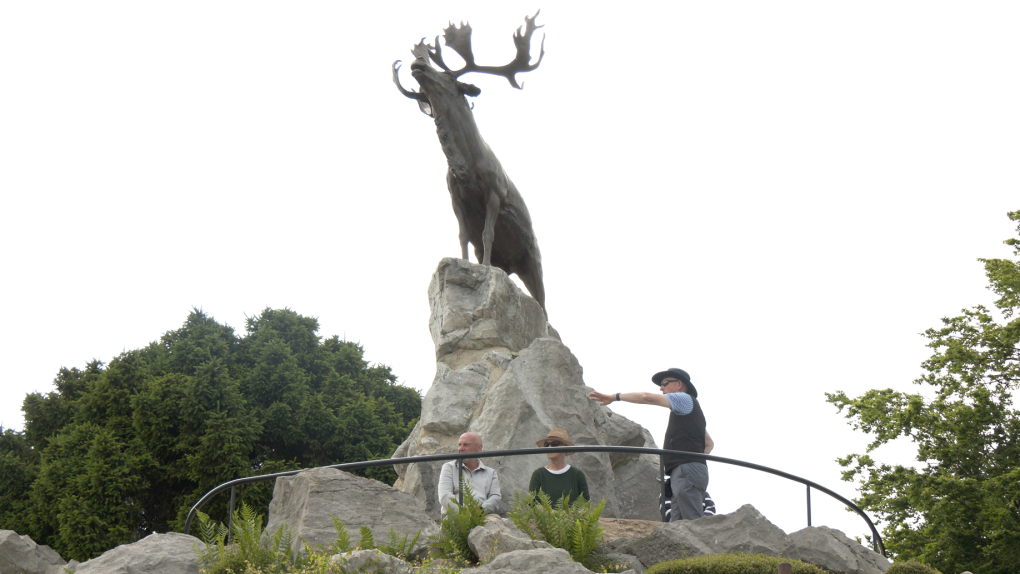Canadian soldiers and government officials arrived in northeastern France this week for a historic mission: returning an unknown Newfoundland soldier back home.
The unknown soldier will return to Newfoundland and Labrador immediately after his remains are handed back to Canadian troops in a ceremony at Beaumont-Hamel on Saturday.
Beaumont-Hamel was the site of a devastating First Wolrd War battle, where hundreds of Newfoundlanders were killed or injured within mere minutes of launching an attack on German troops.
Though the ceremony will be held at the Beaumont-Hamel memorial, the unknown soldier is meant to represent Newfoundland and Labrador’s full contribution to the war effort, so officials won’t say where the soldier died.
“The emotions are overwhelming, the event is overwhelming,” said Premier Andrew Furey, who will serve at the official next of kin for the soldier.
“The responsibility is… definitively the most honourable thing that I’ve done as Premier.”
 A wounded soldier at Beaumont-Hamel. (Courtesy of N.L. provincial archives)
A wounded soldier at Beaumont-Hamel. (Courtesy of N.L. provincial archives)
The pallbearers for the unknown soldier will include current members of the Royal Newfoundland Regiment, the group that fought at Beaumont-Hamel on July 1, 1916.
After his return to Newfoundland, the soldier will lie in state in the lobby of the Confederation Building, Newfoundland and Labrador’s provincial parliament.
He will eventually be entombed in the National War Memorial in downtown St. John’s, which is being redeveloped in time for its 100th anniversary.
Government officials, including the Premier, visited Masnières and Monchy-le-Preux on Thursday, two communities that host Caribou monuments that recognize the contributions of Newfoundlanders in the First World War.
On Friday, the delegation will visit Beaumont-Hamel. The memorial site was first purchased by the Newfoundland government prior to the province’s confederation into Canada in order to maintain the history of the site.
The battle was part the Battle of the Somme, and the British “Big Push” strategy, but Newfoundlanders and Labradorians, for the most part, fought separately during the First World War. Newfoundland was then a Dominion – purportedly on the same level as New Zealand and Canada – and not yet part of confederation.
The casualty list at Beaumont-Hamel is extensive – 324 soldiers were killed in battle, and another 386 were wounded.
 Caribou monument at Beaumont-Hamel with visitors underneath. (CTV News)
Caribou monument at Beaumont-Hamel with visitors underneath. (CTV News)
Losses represented more than 90 per cent of the regiment’s ranks at the time, and for many in Newfoundland and Labrador, a generation of men lost in mere moments on a foreign battlefield.
“It was just purely catastrophic is the only word I can think of,” said Gary Browne, an author, historian, and spokesperson for the Royal Canadian Legion in Newfoundland and Labrador.
Some historians believe that the Newfoundlanders never fired a single shot during the carnage – something that’s been hard for Browne to wrap his head around.
“I’ve seen it said by soldiers. I’ve seen it said by really qualified and well learned historians. And I still don’t know,” he said. “It’s hard to believe, but yet the massacre was just as hard to believe.”
The battle has become part of Newfoundland’s cultural memory, said Maureen Peters, who helped curate a special exhibit to the Royal Newfoundland Regiment at the Rooms, the provincial museum located in St. John’s.
“It just got embedded in the memory and in the people,” she said. “It was just this absolute devastation of something that everybody had worked together to raise up.”



